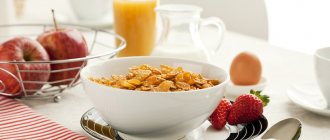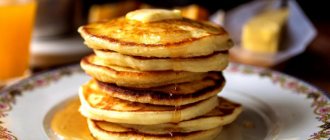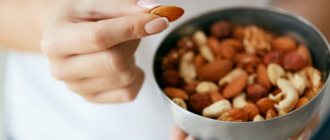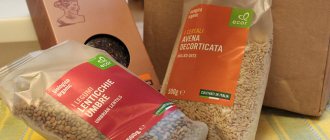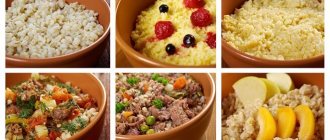Until now, in many diets, pasta is on the prohibited list. This is understandable, because they are high in calories, have high glycemic index values and are not considered a healthy diet.
However, modern dietetics is a constantly evolving industry, which regularly makes discoveries and adapts an increasing number of products so that they can be consumed while losing weight. This happened with pasta: now there is no need to exclude them from the diet, you just need to know which ones will not harm your figure.
You can eat pasta!
If you ask a nutritionist's opinion about whether you can eat pasta while losing weight, the answer will almost always be positive. But with only one condition: they must be made from durum wheat. Such products are subject to less heat treatment and contain a larger amount of bioactive substances, which makes them a priori not only tasty, but also healthy food.
But what to do with their high calorie content? It turns out that this question can be solved mathematically, and quite easily. For example, 100 g of dry egg pasta contains 345 kcal - simply an outrageous indicator for those who are losing weight. However, during cooking they become saturated with water and swell. Their volume becomes almost 2 times larger than it was, and at the end we get 200 g of the finally prepared dish, and the calorie content remains the same. So in 100 g of boiled egg pasta there will already be 172.5 kcal - still a lot, but not as much as it seemed at first.
There are several reasons why nutritionists recommend including pasta in your diet when losing weight.
Firstly, they contain fiber, which performs two beneficial functions at once. Swelling in the stomach, it provides long-term saturation. It also absorbs and successfully removes toxins and other harmful substances, thus cleansing the intestines.
Secondly, pasta is not only a source of carbohydrates, as everyone thinks and therefore they are branded as a dietary product. They also contain protein, with which you don’t have to worry about splitting muscle fibers while losing weight. Thanks to it, the body has to spend fat reserves first.
Thirdly, they contain the amino acid tryptophan. Entering the brain through the blood, it is converted into serotonin - the hormone of happiness. It allows you to avoid stress (one of the causes of excess weight) and compulsive overeating.
So, the right pasta can be safely included in any diet 2-3 times a week.
Through the pages of history. The oldest noodles were discovered in China during excavations of an ancient settlement on the banks of the Yellow River. Archaeologists have determined its age to be 4,000 years old.
"Durum" is not for fools
Walking past the grocery department, it’s hard not to get confused: here you will find yellow and colored pasta, thin and thick, and twisted, and horns, in the form of butterflies and shells, plates and spirals. And what names! Not just noodles and vermicelli, but capellini, linguine, fettuccine, bucatili, farfalle, fusilli, rigatoni... However, you can’t list everything. They say that Italians know at least 300 varieties of pasta. But, since the dietary properties of these products are more or less the same, we will not delve into the intricacies.
Why shouldn't you throw out the water after cooking pasta? More details
Then what should you pay attention to when buying? You definitely shouldn’t take the cheapest pasta: they are made from soft wheat varieties, so they have the highest glycemic index and the worst taste. When cooked, they stick together due to the abundance of starch in their composition and look like a grayish porridge. The more expensive the product, the lower the risk that it will be of poor quality, tasteless and unhealthy. But in order not to overpay, you should pay attention to the packaging. Good pasta is the one made from durum wheat. You can also focus on the letter marking: “A”, “B” or “C”. Look for the letter “A” on the package: this is a guarantee that the pasta is made from good raw materials, that is, it contains little starch and a lot of fiber and vitamins. Good pasta has two ingredients: water and flour. However, pasta is sometimes made with healthy additives: seaweed, bran, buckwheat. The product will not lose anything from this, but only gain.
Which varieties and brands to choose
As mentioned above, it is allowed to consume pasta made from durum wheat in dietary nutrition. But how to distinguish them from soft ones? This is a rather difficult question, because they are almost identical in appearance and taste, and only laboratory examination can sort them out. Therefore, the only way out is to believe what the manufacturers indicate on the packaging. The following symbols can be found on it:
- group A (there is the highest, I and II grades) - from durum wheat varieties, these are the ones that should be purchased for the dietary diet;
- group B - from soft wheat varieties;
- group B (there is the highest and first grade) - made from wheat baking flour, the most harmful and low-quality of all.
Let's take a closer look at which brands offer a quality dietary product.
Shebekinsky (Russia)
Group A. The brand has many advantages: high protein content (13.6%), low prices, wide range.
Gallina Blanca (Spain)
Group A. High protein content (13.4%), absence of impurities and a wide range make this brand very popular.
VkusVill (Russia)
Group A. They contain 7% admixture of soft flour (this is a minus) and quite a lot of protein, 13.1% (this is a plus). Promoted as a natural product without chemical additives.
Makfa (Russia)
Group A. They contain a small amount of impurities, which, according to standards, should not be present in durum wheat pasta. But they have a lot of protein (14.2%).
Genuss Pur (Germany)
Group A. They contain too little fiber, so don’t expect long-term satiety after them. But there is a lot of protein (13.6%).
Maltagliati (Italy)
Group A. They do not contain much protein (11.8%). The multi-colored pasta of this brand is made from natural dyes - spinach and tomatoes.
PastaZara (Italy)
Group A. Contains 3% soft flour and not much protein (10.7%). Just like the Maltagliati brand, multi-colored pasta does not contain chemical dyes - only natural ones, so there is no need to be afraid to include them in your diet.
Barilla (Italy)
Group A. Barilla is one of the most popular brands in the world. Excellent taste, wide range, reasonable prices ensure their high demand. Although they do not contain as much protein as pasta of the same Russian brands (11.8%).
Alce Nero (Italy)
Group A. They do not contain as much fiber as indicated on the package. The brand has a line of bio-pasta with nettles, but don’t be fooled: they contain too little plant extract to have any beneficial effect on the body. There is also not as much protein in them as we would like (10.8%).
Don Gusto (Russia)
Group A. Contains 3% admixture of soft flour (minus) and a lot of protein, about 14% (plus).
Despite minor shortcomings, all the brands reviewed offer their customers dietary pasta that is good for weight loss. At the same time, there are brands that are no less popular among the people, but you should definitely forget about them when going on a diet:
- Rollton;
- Anacom;
- King Lion;
- Doshirak;
- Lunch in 5 minutes;
- Lux Express;
- Big Lunch and Business Lunch.
This pasta for weight loss is made from soft wheat varieties. These are the so-called “b/n-shki” - instant noodles. They definitely cannot be included in any diet.
As for the numerous forms, they do not in any way affect the dietary properties of the product. All these capellini, tagliatelle, girandole, ears, stars, rings, shells, spirals and bows can be safely included in the diet if group A is indicated on the packaging. So the question of whether it is possible to eat spaghetti and other types of pasta while losing weight is resolved only positive if this single condition is met.
This is interesting. Instant noodles were invented in China in the 16th century. First, it was heavily fried and stored for quite a long time, and before use it was soaked in hot broth.
How to cook and eat
To prevent pasta from harming your figure, you need to know how to cook and eat it correctly.
How to cook properly
- For cooking, use only a thick-walled pan.
- In order for pasta to retain maximum nutrients, it must be boiled until half-cooked - al dente.
- The cooking time after boiling depends on the shape of the product and the manufacturer's instructions.
- For 100 g of pasta - 1 liter of water.
- Throw only into boiling water.
- It is not advisable to use salt when losing weight. If you can’t do without this, then do it before adding the pasta to the water.
- To avoid sticking during cooking, stir constantly.
- Cook without a lid.
- Do not rinse under running water. Just drain it in a colander.
- Use only fresh, do not save for tomorrow.
When is the best time to eat
Many people like to cook them for dinner as a side dish for meat dishes. When losing weight, you should forget about this habit. Due to their high calorie content and prolonged digestion, there is a risk that in the evening they will be used to form a layer of fat that you don’t need. The ideal time to use is in the morning: it will help you wake up, lift your spirits, and give you a boost of energy. And most importantly, they will be used to generate the necessary energy, and will not be stored in reserve. It is acceptable to include them in lunch.
What to combine with
- With seafood;
- vegetables: tomatoes, eggplants, broccoli, zucchini;
- cutlets, meatballs and other minced meat products (taking into account the process of losing weight, it should be low-fat);
- mushrooms;
- with cheese (hard varieties) - tasty, but high in calories, so don’t get carried away with this dish when losing weight;
- greens: spinach, basil;
- aromatic herbs.
What doesn't go with
- With alcohol;
- bread;
- sweets;
- fish;
- cereals;
- pasta with meat is not the best combination in terms of dietary nutrition, although it is possible with minced meat;
- unhealthy, fatty and high-calorie foods.
What should be the serving size per person?
Most manufacturers indicate on the packaging that a serving of pasta for 1 person is 75-85 g. At the same time, do not forget about losing weight, which means you can take a smaller volume.
Did you know that... Gogol was not only a great writer, but also an excellent cook? Moreover, his signature dish was precisely pasta, for the recipe of which he specially traveled to Italy.
Know by heart
But even the best pasta can be ruined if you cook it incorrectly. In overcooked pasta, the glycemic index increases from 40 to 50-60 units. The perfect pasta is soft on the outside and slightly firm in the center. Italians call it al dente, which means “by the tooth.”
Article on the topic
Lots of pasta and little sports. The amazing diet of Monica Bellucci To prepare them this way, put the pasta in already boiling salted water (for 100 g of pasta - 1 liter of water), cook for 5-6 minutes, no more (but it’s better to look at what is recommended on the package). There is no need to rinse the pasta after cooking; just place it in a colander and drain the excess water. And, of course, you shouldn’t even store ready-made pasta in the refrigerator; it’s better to eat it fresh immediately after cooking.
Pasta diet
Type: low-calorie, protein-carbohydrate. Duration: 1 week or longer. Results: 1-2 kg per week. Difficulty: low.
Basic principles:
- The basis of the diet is pasta made from durum wheat.
- For 1 meal you can eat no more than 100 g of pasta, cooked al dente.
- They are only eaten for breakfast or lunch. For dinner - vegetables, chicken, fish, seafood.
- Frying as a cooking method is excluded.
- Avoid fatty, high-calorie sauces. Serve pasta with grated cheese, spices or vegetables.
- The daily water consumption rate is at least 2 liters (so that fiber fully performs its functions).
- If after 2 weeks of the diet there is no weight loss, choose a different nutrition system.
- Sports activities are required.
- The daily calorie intake is reduced gradually: reduce it by 200 kcal every week.
Authorized products:
- durum wheat pasta;
- vegetables, except starchy ones;
- chicken, beef, lean fish;
- seafood;
- low fat dairy products;
- unsweetened fruits, berries;
- freshly squeezed juices, fresh juices, fruit drinks, milk and fruit cocktails, green tea;
- whole wheat bread;
- buckwheat, oatmeal, pearl barley, millet, brown rice;
- olive oil (in limited quantities).
Prohibited products:
- pasta made from soft wheat and refined flour;
- starchy vegetables;
- pork, lamb, lard, bacon, duck, goose, fatty fish;
- high fat dairy products;
- sweet fruits, berries;
- coffee, alcohol, soda, energy drinks, store-bought juices;
- bread, confectionery;
- White rice;
- sweets, sugar;
- fast food, snacks.
Sample menu for the week
On a note. October 25th is World Pasta Day. On November 24, the city of Gragnano (Italy) celebrates the birthday of pasta and organizes a pasta festival.
I want more!
Now about the main thing. What to add to pasta to make it a complete dish? After all, few people want to eat empty pasta. But don’t rush to grab a grater to grate your favorite fatty cheese into spaghetti and put away ketchup and cream, and even more so mayonnaise. We definitely won't need them. As well as fried meat, fatty minced meat or - especially - sausage and bacon. Combining these products with each other is tasty and satisfying, but your figure will definitely not appreciate it. And the body, by the way, too.
To make pasta a dietary dish, you can mix it with vegetables (any except starchy ones: potatoes, beets, pumpkins, carrots). They also make a good combination with lean fish, mushrooms, seafood, herbs and low-fat cheeses (ricotta, tofu, feta cheese, curd cheeses). If you really want meat, you can add a small amount of lean poultry (chicken or turkey breast, steamed or grilled). As a sauce, you can use olive oil with lemon juice and mustard, balsamic vinegar, natural yogurt with garlic and tomato paste. But a little bit of everything. And, of course, it is important to remember the serving size (about the size of your palm), and also that pasta dishes are consumed for breakfast or lunch, and not for dinner.
Just add food. How to make “quick noodles” healthier and tastier Read more
Recipes
If you decide not to exclude pasta from your diet, be especially careful when selecting recipes. They should all be low calorie.
- Pasta casserole with broccoli
Boil 400 g of broccoli and 200 g of farfalle (“bows”) in different pans. Mix them. Boil 2 eggs, chop, mix with 50 g of 10% sour cream, dried herbs, nutmeg, granulated garlic (to taste). Grease a baking sheet with olive oil, place the pasta-vegetable mixture on it, and pour in the egg-sour cream dressing. Bake for 20 minutes at 170°C.
- Warm salad
Boil 100 g of tagliatelle (wide noodles), drain in a colander. Cut 50 g of celery into cubes, put 1 lettuce pepper into strips. Peel 1 green apple and 1 cucumber. Grate them on a coarse grater. Mix all ingredients. Microwave for 15 seconds. Place in a mound on lettuce leaves, top with lemon juice first, then natural yoghurt.
- Pasta with shrimp and cheese
In different containers, boil 200 g of long fusilli (spaghetti spirals) and the same amount of peeled king prawns. Cut 2 garlic cloves into thin slices and fry in a little olive oil. Add 150 ml of 10% cream. Pepper, beat in a blender. Add 100 g of grated cheese. Mix pasta with shrimp, top with lemon juice and cream sauce.
- Country-style pasta with vegetables
Boil 300 g lingine (long thin spaghetti). Cut the vegetables: 1 eggplant into thin slices, 2 lettuce peppers into strips, 4 tomatoes into slices. Grease a baking sheet with olive oil. Place vegetables on it. Bake for a quarter of an hour at 180°C. Mix 10 ml each of lemon juice, balsamic vinegar, olive oil, chopped garlic clove, and a little basil. Mix all ingredients. Sprinkle with grated Parmesan before serving.
From the history. In ancient Greek myths, Hephaestus had a machine that made long strings of dough.
Calorie table for pasta
To correctly create a diet for weight loss and not go overboard with your daily calorie intake, refer to this table. Don’t forget that most items are dry pasta and when cooked, their calorie content is almost halved.
Are you planning to lose weight in the near future? Believe me: this is not a reason to give up your favorite pasta. If you choose the right pasta and prepare it correctly, it will not cause you to gain excess weight, but will help you lose it.

